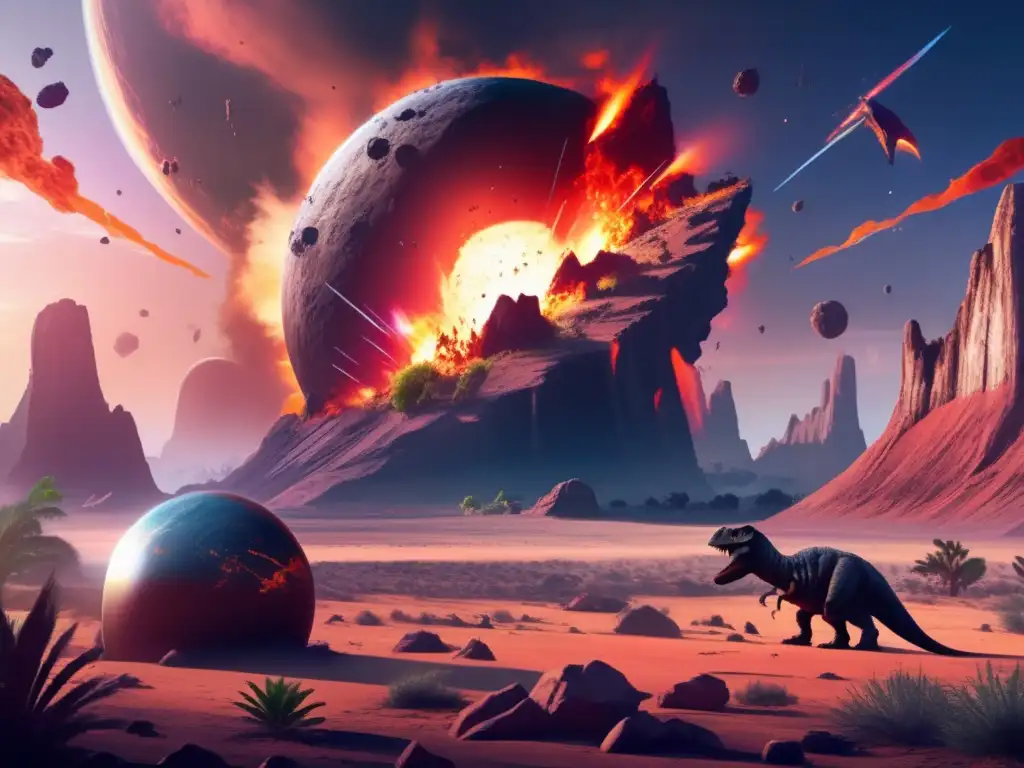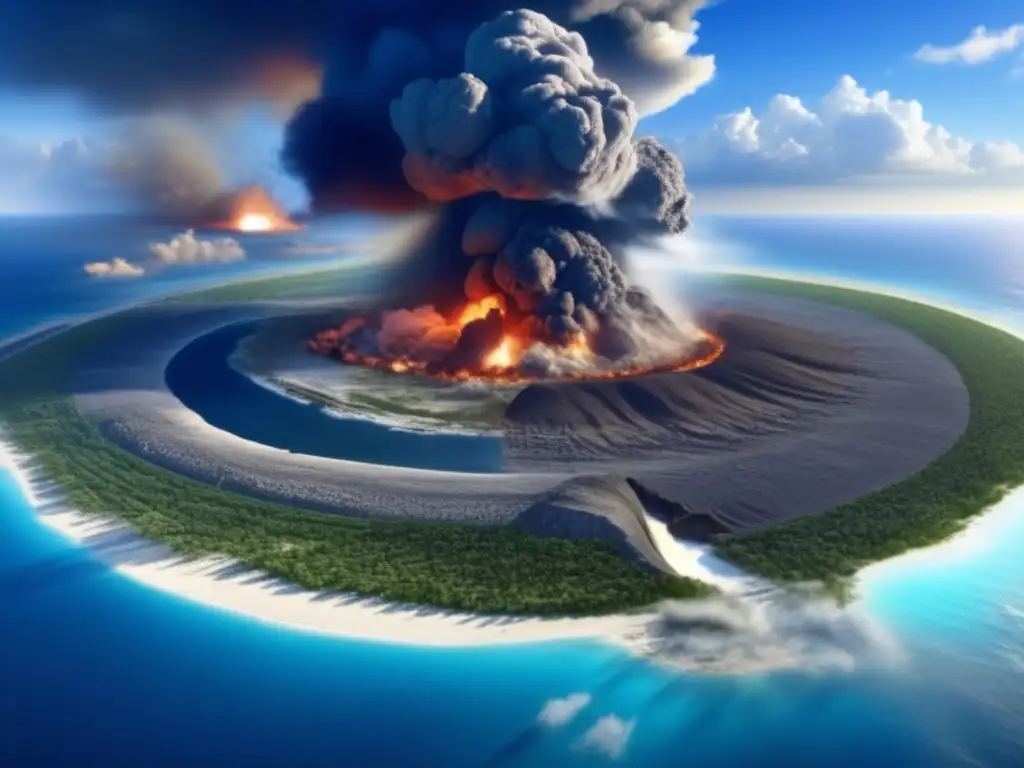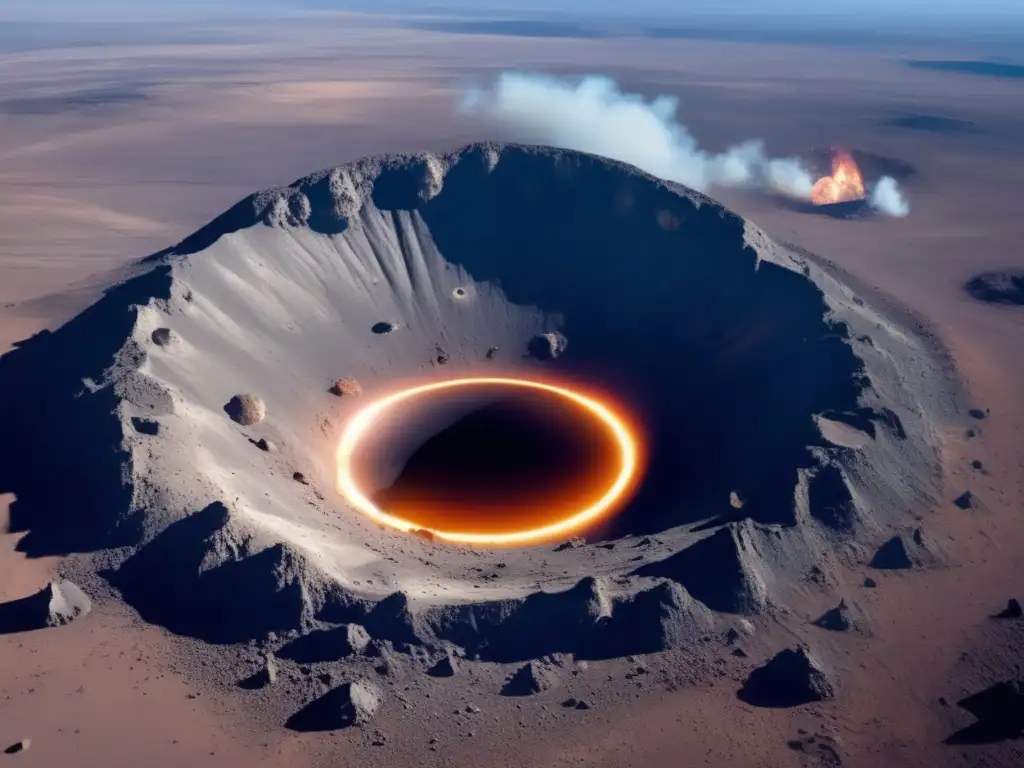Decoding The Dinosaur Apocalypse: The Asteroid Impact

Introduction
The extinction of the dinosaurs has remained one of the most significant events in Earth's history. For a long time, scientists and researchers have been trying to understand the cause of this mass extinction. Fortunately, the discovery of a massive crater in Mexico, named the Chicxulub Crater, provided an answer to this question. This crater is believed to have been caused by the impact of a massive asteroid, roughly 10 km in diameter, which hit the Earth around 66 million years ago, leading to the extinction of the dinosaurs.
What Causes an Asteroid Impact?

Asteroid Composition and Characteristics
Asteroids are small, rocky objects that orbit the Sun. They are leftover material from the formation of our solar system. Most asteroids originate from the asteroid belt, located between Mars and Jupiter. However, some asteroids can be found in other places in the solar system, including near-Earth orbits.
One of the critical factors that determine the effect or damage an asteroid impact can have on Earth is the asteroid's composition. Many asteroids consist of rock and metal, while others contain volatile elements like water, methane, and carbon dioxide.
Impact Velocity and Angle
The speed and angle at which an asteroid hits the Earth can significantly influence the impact's outcome. An asteroid that strikes the Earth at a low angle has less impact energy than one that strikes at a steeper angle. It is due to the increased distance travelled by the asteroid through the Earth’s atmosphere before it hits the surface.
Impact Site
The location of an asteroid impact can also influence its effects. An asteroid that impacts over the ocean can create huge tsunamis while a collision in the land can cause massive earthquakes and initiate volcanic eruptions.
What Happened During the Chicxulub Impact?

The Initial Impact
The asteroid that struck at Chicxulub had a diameter of around 10 kilometers with an estimated speed of 70,000 km/h. The impact was so enormous that it created a crater over 180 km in diameter. The impact energy was equivalent to 100 million megatons of TNT, resulting in an explosion far greater than any known volcanic eruption, earthquake or human-made explosion.
The Aftermath
The Chicxulub impact resulted in an enormous release of heat and shock waves that caused wildfires, earthquakes, and tsunamis that were felt globally. The impact caused massive amounts of debris to be thrown into the atmosphere, blocking sunlight and causing a global temperature drop, leading to the extinction of the dinosaurs and most of the Earth's other species.
How Do We Study Asteroid Impacts?

Crater Analysis
One of the most effective ways to study asteroid impacts is through crater analysis. By analyzing craters' features, including size, shape, and composition, scientists can determine an asteroid's size, velocity, and impact angle. They can also determine what happened after the impact, including how long it took for the crater to form and the types of rocks and minerals that were melted or vaporized.
Impact Modeling
Another way to study asteroid impacts is through impact modeling. Impact modeling involves using computer simulations to recreate asteroid impacts and predicting their possible effects on the Earth's surface. This technique helps researchers understand an impact's potential effects, including the size and depth of the crater, shock waves, earthquakes, and tsunamis.
Frequently Asked Questions

-
How big was the asteroid that caused the Chicxulub impact?
The asteroid that caused the Chicxulub impact was estimated to be about 10 km in diameter.
-
When did the Chicxulub impact occur?
The Chicxulub impact occurred around 66 million years ago during the Cretaceous–Paleogene (K-Pg) extinction event.
-
How did the Chicxulub impact contribute to the extinction of the dinosaurs?
The Chicxulub impact resulted in massive amounts of dust and debris being thrown into the atmosphere, blocking sunlight, and causing a global temperature drop, leading to the extinction of most of the Earth's species, including the dinosaurs.
-
How do scientists study asteroid impacts?
Scientists study asteroid impacts through crater analysis and impact modeling.
-
Could an asteroid impact happen again?
Yes, asteroid impacts can happen again. However, NASA has identified and monitored several potential impact threats and continues to search for asteroids that could pose a threat to Earth.
Conclusion
The Chicxulub impact served as a reminder of the potential destruction that asteroids can cause. By studying past asteroid impacts, scientists can better understand the mechanisms behind these events and develop plans to mitigate potential future impacts. While the risk of an asteroid impact is small, it remains essential to continue research and monitoring. Only through continued exploration of the asteroid realm can we hope to develop effective measures to protect ourselves and our planet.
Share your thoughts in the comments section and interact with www.asteroidrealm.com positively. Consider subscribing and sharing this article on social networks to inspire more people to take an interest in the asteroid topic. Thank you for reading.
Additional Resources

- NASA Planetary Defense
- American Meteor Society
- How to Determine the Size of an Asteroid using Telescope Images - NASA Jet Propulsion Laboratory (JPL)
 Armageddon From The Skies: The Asteroid Impact Theory
Armageddon From The Skies: The Asteroid Impact Theory The Day The Earth Shook: Asteroids And Dinosaur Extinction
The Day The Earth Shook: Asteroids And Dinosaur Extinction Asteroids: The Silent Killers Of The Dinosaur Era
Asteroids: The Silent Killers Of The Dinosaur EraIf you want to discover more articles similar to Decoding The Dinosaur Apocalypse: The Asteroid Impact, you can visit the Asteroids and Dinosaurs category.
Leave a Reply

Articulos relacionados: